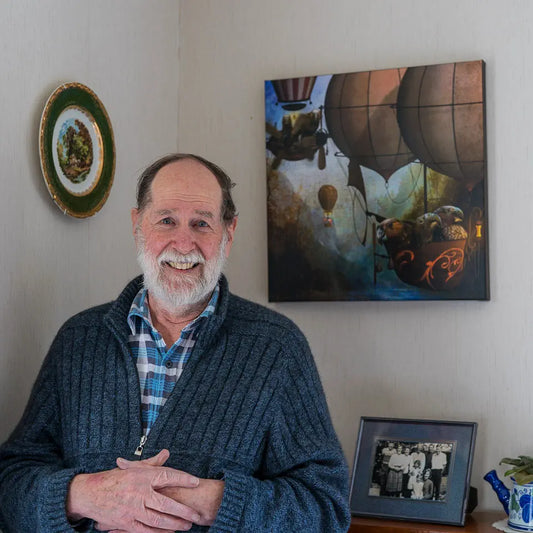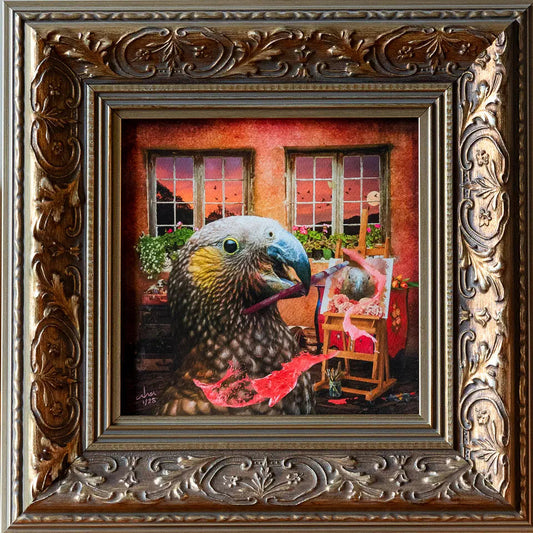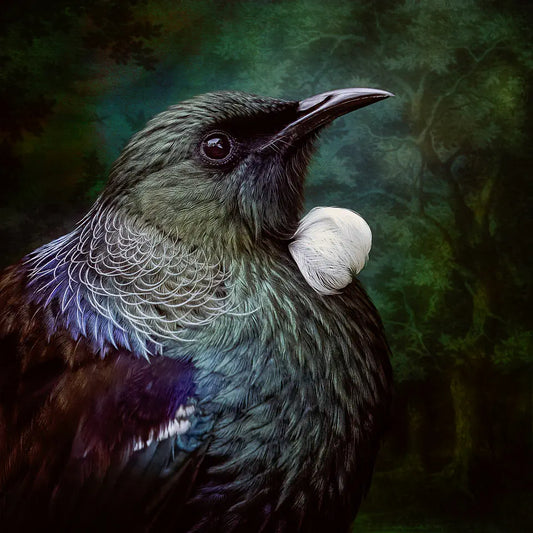
High dynamic range photography (HDR+) and kākā nestbox monitoring
Share
Monitoring bird nestboxes often involves lots of waiting around for mum to leave the nest, often to find there was no one in the nestbox to begin with. One way to expedite this process with some species is to use a small car mechanic's inspection mirror (which has an adjustable-angle mirror and a telescoping handle) and a flashlight to get a glimpse of the box contents. This can take a lot of futzing around to get the angles right, and some of us just don't seem to have the coordination required.
After a particularly frustrating kākā-monitoring outing with various failed attempts at using a mirror, I wondered if it might simply be easier to stick my Nexus 5X into the nestbox “porthole” and take a quick HDR+ photo without any additional light or flash. (The entrance porthole is for birds to get in and out of the nestbox—for kākā it's about 10 cm wide and about 50 cm above the floor of the nestbox, which makes it a convenient size for a mobile phone.)
Et voilà! It worked. Not only was I able to ascertain whether the nestboxes were active or not, but the pictures were clear enough in some cases to count the eggs and age the chicks, such that I didn't need to open the box. The whole process (for me at least!) was much faster than mirroring, meaning less disturbance to the nest occupants, as well as providing a permanent record of the nest check.
I've been interested in experimenting with HDR+ after watching Marc Levoy's lecture series recently on digital photography. Fortunately, I'd just upgraded my phone to a Nexus 5X, which has the Google Camera app. What does HDR+ mode do? It allows for extremely low-light photos without flash—it’s nothing short of magic (but makes a whole lot of sense once you delve into the science). As Marc explains in his blog, HDR+ takes “a burst of shots with short exposure times, aligning them algorithmically, and replacing each pixel with the average color at that position across all the shots.” The whole process takes 1/3 to 1 second.
These photos won’t win any photography awards, but they do demonstrate how new camera technology can provide new solutions to old problems. And what's nice is that so many nest monitors are already packing the technology in their back pockets (or will be once HDR+ becomes more ubiquitous).
I can't imagine bird monitoring without a mobile device any more—I can do everything from taking audio field notes, checking my position with GPS, consulting maps, updating the team Google Docs spreadsheets for the nestboxes, photographing the development of my chicks, and answering work emails while sitting under a tree waiting for mama bird. Though I still pack some paper and a pen, just in case technology fails me!
Note: Some of you may be interested in the nestbox shown in the photo, which is specially designed for kākā parrots. It is made out of PVC plumbing conduit that is impervious to the strong beak of the kākā (who love to chew). It has a mesh base for drainage and the base is filled with wood chip. Additional wood panels are screwed to the walls as a ladder to allow the mother (and fledging chicks) to get in and out of the porthole near the top of the nestbox, and for the mother to create additional nesting material by chewing and stripping the boards. On the right side in the photo you can see the inspection door, which is only opened once it is ascertained that the mother is not in the nestbox. The rope on the left is also to help the birds get in and out, but after trialling them, we no longer recommend them, as they can get chewed and frayed.



